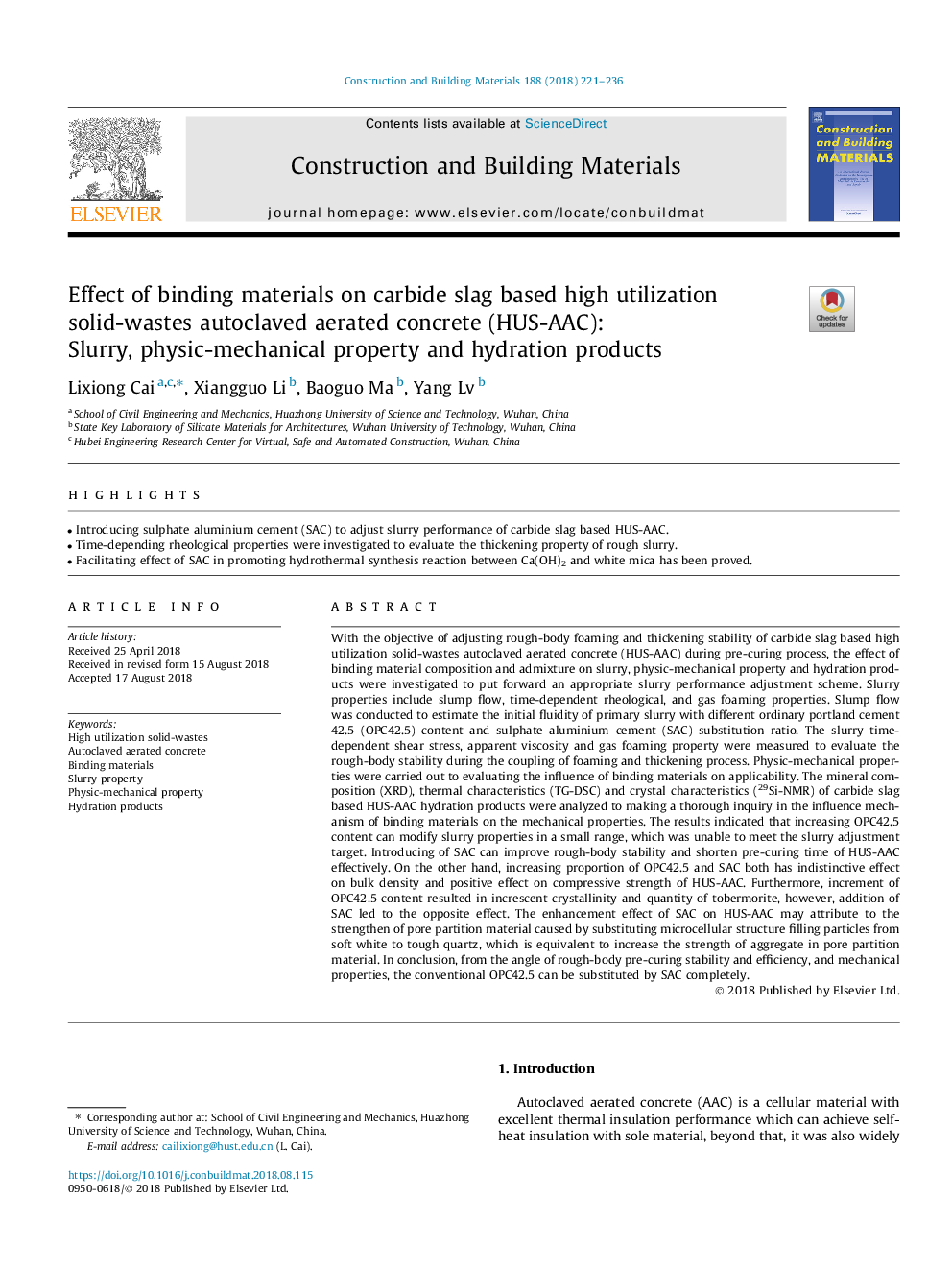| کد مقاله | کد نشریه | سال انتشار | مقاله انگلیسی | نسخه تمام متن |
|---|---|---|---|---|
| 8947058 | 1645545 | 2018 | 16 صفحه PDF | دانلود رایگان |
عنوان انگلیسی مقاله ISI
Effect of binding materials on carbide slag based high utilization solid-wastes autoclaved aerated concrete (HUS-AAC): Slurry, physic-mechanical property and hydration products
دانلود مقاله + سفارش ترجمه
دانلود مقاله ISI انگلیسی
رایگان برای ایرانیان
کلمات کلیدی
موضوعات مرتبط
مهندسی و علوم پایه
سایر رشته های مهندسی
مهندسی عمران و سازه
پیش نمایش صفحه اول مقاله

چکیده انگلیسی
With the objective of adjusting rough-body foaming and thickening stability of carbide slag based high utilization solid-wastes autoclaved aerated concrete (HUS-AAC) during pre-curing process, the effect of binding material composition and admixture on slurry, physic-mechanical property and hydration products were investigated to put forward an appropriate slurry performance adjustment scheme. Slurry properties include slump flow, time-dependent rheological, and gas foaming properties. Slump flow was conducted to estimate the initial fluidity of primary slurry with different ordinary portland cement 42.5 (OPC42.5) content and sulphate aluminium cement (SAC) substitution ratio. The slurry time-dependent shear stress, apparent viscosity and gas foaming property were measured to evaluate the rough-body stability during the coupling of foaming and thickening process. Physic-mechanical properties were carried out to evaluating the influence of binding materials on applicability. The mineral composition (XRD), thermal characteristics (TG-DSC) and crystal characteristics (29Si-NMR) of carbide slag based HUS-AAC hydration products were analyzed to making a thorough inquiry in the influence mechanism of binding materials on the mechanical properties. The results indicated that increasing OPC42.5 content can modify slurry properties in a small range, which was unable to meet the slurry adjustment target. Introducing of SAC can improve rough-body stability and shorten pre-curing time of HUS-AAC effectively. On the other hand, increasing proportion of OPC42.5 and SAC both has indistinctive effect on bulk density and positive effect on compressive strength of HUS-AAC. Furthermore, increment of OPC42.5 content resulted in increscent crystallinity and quantity of tobermorite, however, addition of SAC led to the opposite effect. The enhancement effect of SAC on HUS-AAC may attribute to the strengthen of pore partition material caused by substituting microcellular structure filling particles from soft white to tough quartz, which is equivalent to increase the strength of aggregate in pore partition material. In conclusion, from the angle of rough-body pre-curing stability and efficiency, and mechanical properties, the conventional OPC42.5 can be substituted by SAC completely.
ناشر
Database: Elsevier - ScienceDirect (ساینس دایرکت)
Journal: Construction and Building Materials - Volume 188, 10 November 2018, Pages 221-236
Journal: Construction and Building Materials - Volume 188, 10 November 2018, Pages 221-236
نویسندگان
Lixiong Cai, Xiangguo Li, Baoguo Ma, Yang Lv,